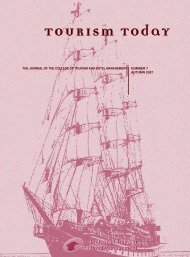The Invisible Black Victim: How American Federalism Perpetuates ...
The Invisible Black Victim: How American Federalism Perpetuates ...
The Invisible Black Victim: How American Federalism Perpetuates ...
You also want an ePaper? Increase the reach of your titles
YUMPU automatically turns print PDFs into web optimized ePapers that Google loves.
witnesses according to their group affiliation in the same manner as the witnesses at<br />
congressional hearings. Philadelphia and Pittsburgh represent important venues for this<br />
analysis for two reasons. First, they are localities where crime and violence have been issues<br />
of central concern to residents. Both cities have relatively high crime rates and high rates of<br />
victimization for blacks. Indeed, the state of Pennsylvania has one of the highest black<br />
homicide rates in the country, with Philadelphia and Pittsburgh being the primary source of<br />
those homicides (Violence Policy Center 2010). Second, these cities represent areas with<br />
substantial African <strong>American</strong> populations, providing an opportunity to observe political<br />
mobilization on crime issues at the grassroots level, without the winnowing and filtering that<br />
takes place in national politics. During most of the time frame of this study (late 1990s<br />
through 2006), Philadelphia had an African <strong>American</strong> mayor (John F. Street) and seven black<br />
city council members (41 percent of the city council). Pittsburgh had two black city council<br />
members (22 percent of the city council). Details on the compilation of hearings, interviews,<br />
and site selection are in the Appendix.<br />
Table 5 illustrates the breakdown of group representation in these cities on a wide range of<br />
crime issues across the crime hearings between 1997 and 2006. What is striking is the<br />
strength of citizen groups. Fully 25 percent of the witnesses (128/500) at local crime hearings<br />
over the nine-year period came from citizen organizations, nearly four times as many as in<br />
Congress over a period one-third as long.14 Furthermore, the presence of citizen groups was<br />
almost a mirror image of the representation of criminal justice agencies in Congress. Where<br />
police, prosecutors, judges, corrections officials, and other agents of the criminal justice<br />
system were the modal witnesses at congressional crime hearings, citizen groups representing<br />
broad concerns about a wide range of social issues were the most frequent in these two cities.<br />
In addition, while citizen groups were a small fraction of congressional witnesses, police and<br />
prosecutors were only modestly represented in local urban crime debates. Here we can<br />
contrast the ease with which law enforcement and prosecutors are drawn into Congress's<br />
jurisdiction over border control, guns, and weaponry with the diffuse and varied control over<br />
these agencies at the local level.<br />
Not only did citizen groups represent the modal group generally, but the dominant type of<br />
citizen group involved in local crime politics was not a single-issue group but, rather, a broad<br />
one, addressing crime in the context of a wide range of social problems. One hundred and<br />
thirty-one citizen groups participated in local crime politics during this time period, and 102<br />
of them (78 percent) were broad organizations whose missions extended well beyond crime<br />
and justice to other quality-of-life issues such as neighborhood conditions, schools,<br />
recreational and employment opportunities, and so on. By contrast, during a comparable<br />
period in Congress, only 11 such broad citizen groups appeared over seven years, across<br />
twice as many hearing opportunities (103). Stated differently, local elected officials heard<br />
from an average of two and a half citizen groups with broad quality-of-life concerns each<br />
time they held a crime and justice hearing. Congress heard from just one such group every 10<br />
hearings. In addition, while citizen groups in Congress are overwhelmingly single-issue in<br />
nature, at the local level of participation, citizen groups with broad concerns outnumbered<br />
single-issue groups by almost three to one.<br />
Many of these citizen groups represent low-income and minority neighborhoods; these<br />
groups are not only central to discussions of crime and justice, they are also important<br />
constituents for local politicians (see Berry et al. 2006 and Strolovitch 2007 for discussion of<br />
race and class bias in interest group activity). For example, in September 2007, during the<br />
Philadelphia mayoral race, candidate Michael Nutter met with members of the group














